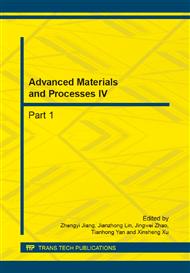p.484
p.491
p.495
p.499
p.504
p.509
p.513
p.517
p.521
Preparation of a New Biomass-CWS with Soluble Sylvite
Abstract:
According to the preparation method of coal-water slurry, the paper tries to use the cattle dung and livestock wastewater as biomass and coal to prepare a new composite CWS. This new CWS utilizes biomass waste instead of some content coal and fresh water, and it shows similar property with CWS by pure coal. The co-slurrying properties and the influences of different types of coal of cattle dung and coal were studied. Experiments show that: the adding cattle dung and livestock wastewater could prepare slurry fuel better than not, the dry biomass dosage can reach 7%. Through the experiment detection biomass-CWS properties (such as heat, concentration, viscosity, granularity, sulfur and ash, stability, volatile, ash melting point, etc), we found the best ratio of cattle dung, coal, water and additives for co-slurrying, the best preparation conditions and the best kind of coal. As the result shown, the biomass-CWS is prepared by anthracite, cattle dung (dry) and additives, this respective content are 53%, 7% and 0.6%. Consider fresh cattle dung having 70% water, this CWS should be prepared by wet pulping and ball milling 15mins. Because of adding biomass and waste water, 7% soluble sylvite has been detected in the coal ash.
Info:
Periodical:
Pages:
504-508
Citation:
Online since:
September 2014
Authors:
Keywords:
Price:
Сopyright:
© 2014 Trans Tech Publications Ltd. All Rights Reserved
Share:
Citation:


